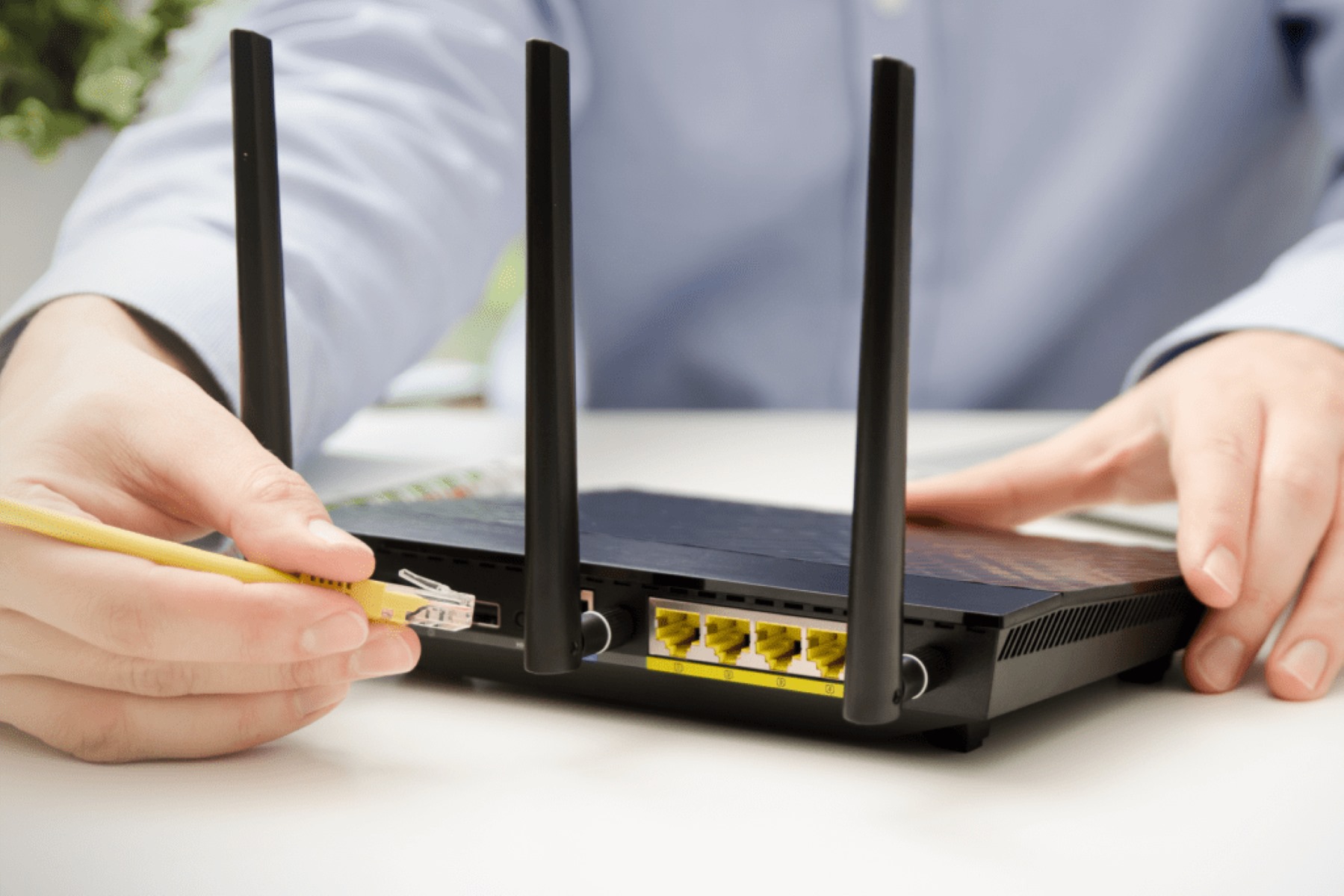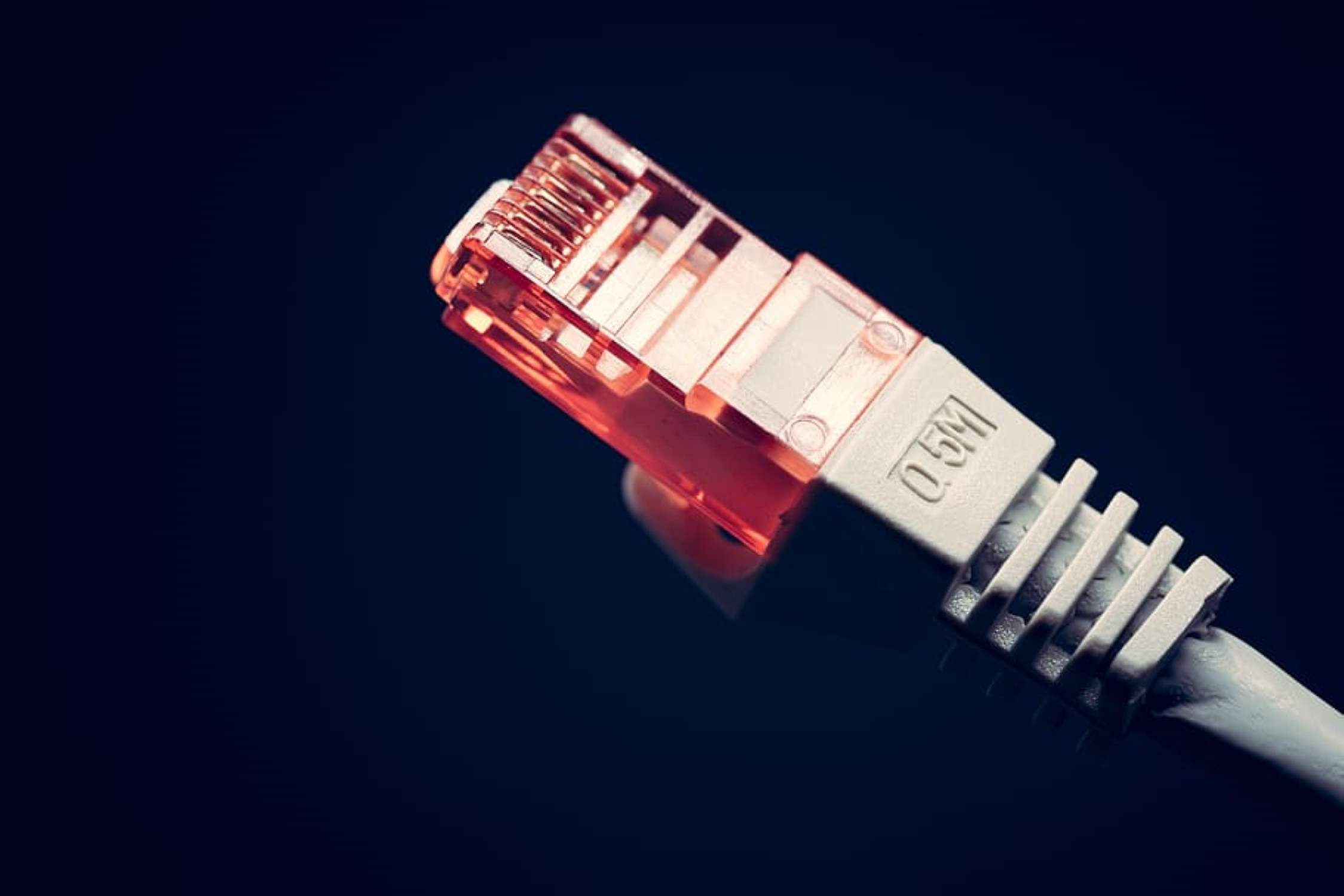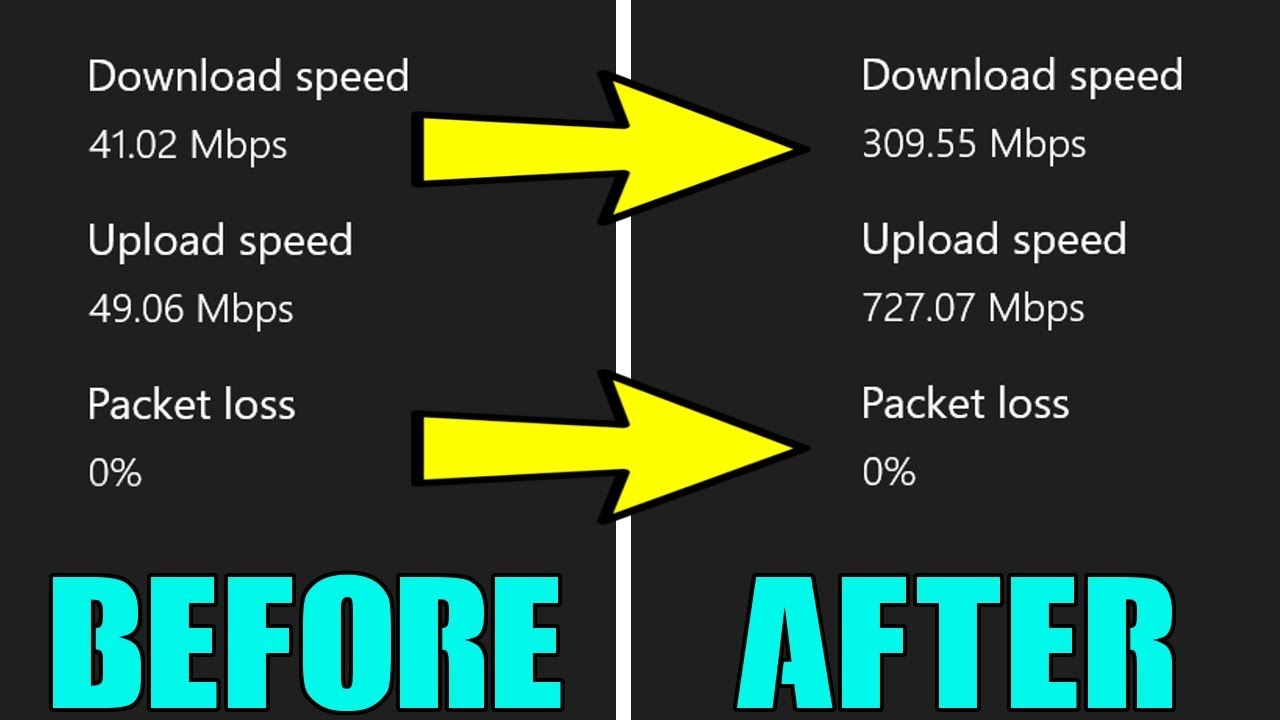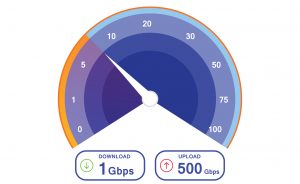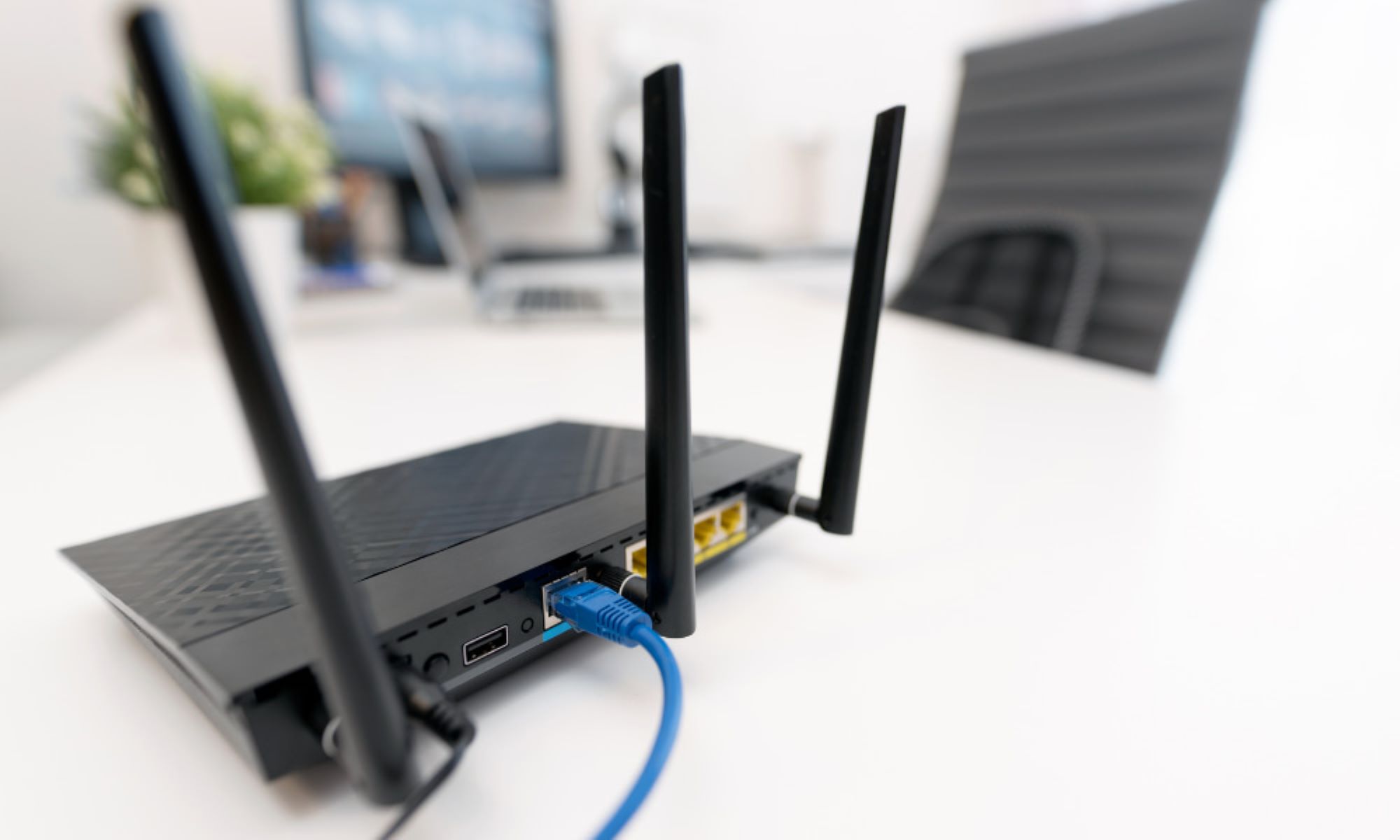Introduction
Is your Ethernet speed frustratingly slow? Are you struggling to load web pages, stream videos, or transfer files across your network? Slow Ethernet speed can be a frustrating and time-consuming problem, but don’t worry – you’re not alone. Many users experience sluggish Ethernet connections, and there can be several factors contributing to this issue.
Before we dive into the common causes and troubleshooting tips, let’s first understand what Ethernet speed is and why it’s essential for your network performance. Ethernet is a widely-used networking technology that allows devices to communicate with each other over a local area network (LAN) or the internet. The speed of your Ethernet connection determines how quickly data can be sent and received between devices on your network.
Understanding your Ethernet speed is crucial because it directly impacts your overall browsing experience, streaming quality, and file transfer speeds. Whether you’re a gamer looking for smoother online gameplay or a professional requiring fast data transfers, having a slow Ethernet connection can be a significant hindrance.
In this article, we will explore the common causes of slow Ethernet speed and provide you with troubleshooting steps to help you resolve this issue. By identifying and addressing the underlying problems, you can regain the speed and efficiency you need for a seamless online experience.
Understanding Ethernet Speed
When it comes to Ethernet speed, it’s crucial to comprehend the various terms and measurements associated with it. Ethernet speed is typically measured in megabits per second (Mbps) or gigabits per second (Gbps), indicating the rate at which data can be transmitted over your network.
The most common Ethernet speeds for home networks are 10 Mbps, 100 Mbps, 1 Gbps, and 10 Gbps. The higher the Mbps or Gbps, the faster the data transfer rate. For example, a 1 Gbps Ethernet connection is capable of transferring data ten times faster than a 100 Mbps connection.
It’s important to note that the Ethernet speed you experience on your device may not always match the maximum speed supported by your router or internet service provider (ISP). Factors such as network congestion, hardware limitations, and the quality of your Ethernet cables can affect the actual speed you achieve.
Furthermore, Ethernet speed can be categorized into two types: download speed and upload speed. Download speed refers to how quickly data can be received from the internet or other devices on your network, while upload speed indicates the rate at which data can be sent from your device to the network or internet.
Understanding the distinction between download and upload speed is crucial, especially if you often engage in activities such as online gaming, video conferencing, or cloud-based file sharing. Depending on your specific usage requirements, you may need to prioritize one over the other when troubleshooting slow Ethernet speed issues.
Now that we have a clear understanding of Ethernet speed and its measurement, let’s delve into the common causes that can lead to a slow Ethernet connection. By identifying these factors, we can begin troubleshooting and resolving the speed-related issues effectively.
Common Causes for Slow Ethernet Speed
Slow Ethernet speed can be attributed to various factors. By identifying the common causes, you can narrow down the troubleshooting process and find a solution quickly. Here are some of the main culprits behind sluggish Ethernet performance:
1. Network Congestion:
Too many devices simultaneously using the same network can lead to congestion and a decrease in Ethernet speed. If several users are streaming videos, downloading large files, or playing online games, it can strain your network bandwidth and cause a slowdown.
2. Outdated Network Drivers:
Outdated or incompatible network drivers can impact Ethernet speed. Ensure that your network drivers are up to date to optimize your network performance and resolve any compatibility issues.
3. Faulty Ethernet Cable:
A damaged or faulty Ethernet cable can severely impact your connection speed. Inspect the cable for any signs of wear and tear, such as frayed cords or loose connectors. Consider replacing the cable if needed.
4. Router Placement:
The location of your router can affect the strength and speed of your Ethernet connection. Keep your router in a central location, away from obstructions such as walls or large objects, to ensure optimal signal distribution.
5. Interference:
Interference from other electronic devices like cordless phones, microwave ovens, or neighboring Wi-Fi networks can disrupt your Ethernet signal and lead to slower speeds. Minimize interference by relocating your router away from these devices and selecting a less congested Wi-Fi channel.
6. Malware or Viruses:
Malware or viruses on your device can consume network resources and cause a significant decrease in Ethernet speed. Regularly scan your devices for malware and ensure that you have reliable antivirus software installed.
By addressing these common causes, you can alleviate slow Ethernet speed issues and restore optimal network performance. In the next section, we will explore useful troubleshooting tips to help you resolve this problem effectively.
Troubleshooting Slow Ethernet Speed
If you’re experiencing slow Ethernet speed, there are several troubleshooting steps you can take to identify and resolve the issue. Follow these tips to improve your network performance:
1. Check your Network Connection:
Start by ensuring that other devices on your network are not causing the slowdown. Disconnect any unnecessary devices and close bandwidth-intensive applications on other devices to free up network resources.
2. Check your Ethernet Cable:
Inspect your Ethernet cable for any visible damage and ensure that it is securely plugged into both your device and the router. If you suspect a faulty cable, try using a different one to see if it improves the speed.
3. Update your Network Drivers:
Visit the manufacturer’s website for your network adapter and download the latest drivers compatible with your operating system. Outdated or incompatible network drivers can hamper Ethernet speed.
4. Manage Network Traffic:
Optimize your network by prioritizing network traffic. You can configure Quality of Service (QoS) settings on your router to allocate bandwidth to specific applications or devices, ensuring that critical tasks receive sufficient network resources.
5. Resetting your Network Settings:
Perform a network reset to clear any temporary glitches that may be affecting your Ethernet speed. Go to your device’s network settings and choose the option to reset your network settings. Note that this will remove any saved Wi-Fi passwords.
6. Restart your Router and Modem:
Sometimes, a simple restart can resolve connectivity issues and improve Ethernet speed. Power off your router and modem, wait for a few seconds, and then turn them back on. This can help refresh the network connection and resolve any temporary issues.
By following these troubleshooting steps, you can address common problems that cause slow Ethernet speed. However, if the issue persists, it may be worth contacting your internet service provider (ISP) for further assistance or considering upgrading your network equipment for faster speeds.
Checking your Network Connection
When troubleshooting slow Ethernet speed, it’s essential to start by checking your network connection. By ensuring that your network is functioning properly, you can eliminate potential issues that may be causing the slowdown. Here are some steps to follow:
1. Test the Speed of your Internet Connection:
Before diving into specific troubleshooting steps, determine if the slow Ethernet speed is solely limited to your local network or if it also affects your internet connection. Use an online speed test tool to measure your internet speed and compare it to the expected speed from your internet service provider (ISP).
2. Check for Network Congestion:
If multiple devices are using your network simultaneously, it can lead to congestion and a decrease in Ethernet speed. Identify any bandwidth-intensive applications or devices that may be consuming a significant portion of your network resources. Close those applications or temporarily disconnect unnecessary devices to free up bandwidth.
3. Prioritize Network Traffic:
Ensure that critical applications, such as video conferencing or online gaming, are given priority access to your network resources. Many routers have built-in Quality of Service (QoS) settings that allow you to allocate bandwidth to specific applications or devices. Configure these settings to ensure that important tasks receive the necessary network resources.
4. Disable Background Processes and Updates:
Background processes and automatic updates can consume network resources and hinder Ethernet speed. Close any unnecessary applications running in the background and temporarily disable automatic updates to free up bandwidth for your immediate needs.
5. Restart your Devices:
Restarting your computer, router, and modem can sometimes resolve connectivity issues and improve Ethernet speed. Power off each device, wait for a few seconds, then power them back on. This process helps refresh the network connection and clears any temporary glitches that may be affecting your speed.
6. Connect Directly to your Modem:
If you suspect that your router may be causing the slow Ethernet speed, connect your device directly to the modem using an Ethernet cable. This bypasses the router and allows you to test the speed directly from the modem. If you notice a significant improvement in speed, it may indicate an issue with your router that needs further investigation.
By following these steps and ensuring that your network connection is optimized, you can eliminate potential issues and focus on troubleshooting other aspects that may be affecting your Ethernet speed. In the next sections, we will delve deeper into specific areas, such as checking your Ethernet cable and updating your network drivers.
Checking your Ethernet Cable
When troubleshooting slow Ethernet speed, one of the common culprits is a faulty or damaged Ethernet cable. A damaged cable can significantly impact your connection quality and speed. Here are some steps to check if your Ethernet cable is causing the slowdown:
1. Inspect the Cable:
Start by visually examining your Ethernet cable for any visible signs of damage. Look for frayed cords, bent connectors, or any other physical damage that may affect the cable’s performance. If you notice any issues, it’s recommended to replace the cable.
2. Securely Plug in the Cable:
Ensure that the Ethernet cable is securely plugged into both your device and the router. Sometimes, a loose connection can cause intermittent or slow speeds. Gently push the cable connectors into their respective ports to ensure a snug fit.
3. Try an Alternate Cable:
If you suspect that your Ethernet cable may be the cause of the slowdown, try using a different cable to see if it improves the speed. Borrow a cable from a friend or use a spare cable if you have one available. This will help determine if the issue is specific to the cable itself.
4. Test with a Known Good Cable:
If you don’t have access to a spare Ethernet cable, try connecting your device directly to the router or modem using a known good cable. This will help validate if the original cable is indeed the source of the problem. If the known good cable provides a faster connection, it’s a strong indication that the original cable needs replacement.
5. Consider Upgrading to a Higher Quality Cable:
Not all Ethernet cables are created equal. If you’re using an older or lower-quality cable, it may not be capable of supporting higher speeds. Consider upgrading to a Cat 5e, Cat 6, or Cat 6a Ethernet cable, as they offer better performance and are designed to handle faster speeds.
6. Test Ethernet Adapter Ports:
If you have multiple Ethernet ports on your device, try connecting the cable to different ports to rule out any issues with a specific port. Occasionally, a faulty port can lead to slower speeds. If one port consistently shows better speed, it may indicate a problem with the other port.
By thoroughly checking your Ethernet cable and ensuring it is in good condition, you can eliminate any problems caused by a faulty cable. If the issue persists even after checking and replacing the cable, it’s time to explore other troubleshooting avenues, such as updating your network drivers.
Updating your Network Drivers
Outdated or incompatible network drivers can significantly impact Ethernet speed. Therefore, it’s essential to keep your network drivers up to date to ensure optimal performance. Here’s a step-by-step guide on how to update your network drivers:
1. Determine your Network Adapter:
Identify the make and model of your network adapter. This information can be found in the Device Manager or by checking the specifications of your device’s manufacturer.
2. Visit the Manufacturer’s Website:
Go to the manufacturer’s website for your network adapter. Look for a “Support” or “Downloads” section.
3. Download the Latest Driver:
Locate the latest driver compatible with your operating system and download it. Make sure to choose the correct version that matches your device and operating system.
4. Uninstall the Old Driver:
Before installing the new driver, it’s recommended to uninstall the old driver to avoid any conflicts. Go to the Device Manager, expand the “Network adapters” section, right-click on your network adapter, and select “Uninstall device.” Follow the prompts to complete the uninstallation.
5. Install the New Driver:
After uninstalling the old driver, run the downloaded driver installation file. Follow the on-screen instructions to install the new driver. Restart your computer after the installation process is complete.
6. Verify the Driver Update:
Go back to the Device Manager and verify that the new driver is correctly installed. Look for your network adapter under the “Network adapters” section. It should display the updated driver version.
7. Test your Ethernet Speed:
Once the driver update is complete, test your Ethernet speed to see if the update has improved the performance. Use a speed test tool to measure your network speed and assess if the update has made a noticeable difference.
Regularly updating your network drivers can resolve compatibility issues and ensure that you are benefiting from the latest performance improvements. Remember to check for driver updates periodically to maintain optimal Ethernet speed.
Managing Network Traffic
Managing network traffic effectively plays a vital role in ensuring optimal Ethernet speed. By prioritizing and allocating network resources efficiently, you can prevent congestion and maintain a smooth and fast network connection. Here are some strategies for managing network traffic:
1. Quality of Service (QoS) Settings:
Most routers offer QoS settings, allowing you to prioritize certain applications or devices over others. Utilize these settings to allocate more bandwidth to critical tasks such as video conferencing or online gaming. By assigning higher priority to these applications, you ensure they receive the necessary network resources for a seamless experience.
2. Bandwidth Monitoring and Limiting:
Monitor the bandwidth usage of various devices and applications on your network. Some routers have built-in tools that allow you to track bandwidth consumption. Identify bandwidth-intensive applications and allocate a maximum limit to prevent them from hogging the network resources. This ensures a fair distribution of bandwidth among all devices and applications.
3. Use Traffic Shaping/Rate Limiting:
Traffic shaping or rate limiting is a technique to control the rate of data flow on your network. It allows you to set limits on upload and download speeds for different devices or applications. By controlling the data flow, you can prevent network congestion and ensure smoother overall performance.
4. Prioritize Wired Connections:
Ethernet connections generally offer more stability and faster speeds compared to Wi-Fi. Whenever possible, prioritize wired Ethernet connections over wireless connections, especially for critical tasks that demand higher speed and reliability.
5. Configure Firewall and Security Settings:
Configure your firewall and security settings carefully to prevent unnecessary network traffic from consuming bandwidth. Enable appropriate security measures such as a strong password, firewall rules, and ensuring that unauthorized devices aren’t connected to your network.
6. Consider Quality Network Switches:
If you have a large network with multiple devices, consider investing in quality network switches. These switches help manage and distribute network traffic efficiently, reducing congestion and improving Ethernet speed.
Managing network traffic is essential for optimizing your Ethernet speed. By implementing these strategies, you can ensure that critical applications receive the necessary bandwidth while preventing congestion and maintaining a fast and reliable network connection.
Resetting your Network Settings
If you’re experiencing slow Ethernet speed, resetting your network settings can help resolve any temporary configuration issues that may be affecting your connection. Resetting your network settings can clear out any conflicting settings and restore your network to its default state. Here’s how to reset your network settings:
1. Restart your Device:
Before resetting your network settings, start by simply restarting your device. This can often resolve minor connectivity issues and improve Ethernet speed. Power off your device, wait for a few seconds, and then power it back on.
2. Resetting Network Settings on Windows:
On Windows, you can reset your network settings by following these steps:
- Open the Start menu and go to “Settings.”
- Select “Network & Internet.”
- In the left-hand menu, click on “Status.”
- Scroll down and click on the “Network reset” option.
- Click on “Reset now” and follow the prompts to reset your network settings.
3. Resetting Network Settings on macOS:
On macOS, you can reset your network settings by doing the following:
- Open the Apple menu and go to “System Preferences.”
- Click on “Network.”
- In the left-hand menu, select the network connection you’re using (Ethernet).
- Click on the minus (“-“) button to remove the connection.
- Click on the plus (“+”) button to add a new connection and follow the prompts to set up your Ethernet connection again.
4. Resetting Network Settings on Mobile Devices:
On mobile devices, the steps to reset network settings may vary slightly depending on the operating system. Typically, you can find the option to reset network settings under the “Settings” or “Connections” menu. Look for an option like “Reset Network Settings” and follow the prompts to reset your network settings.
Keep in mind that resetting your network settings will remove any saved Wi-Fi passwords, so make sure you have them handy to reconnect to your Wi-Fi networks.
Resetting your network settings can help resolve connectivity issues that may be causing slow Ethernet speed. After resetting, test your Ethernet speed to see if the issue is resolved. If the problem persists, you may need to explore other troubleshooting options.
Restarting your Router and Modem
If you’re experiencing slow Ethernet speed, one of the simplest yet effective troubleshooting steps is to restart your router and modem. Restarting these devices can resolve connectivity issues, refresh the network connection, and improve Ethernet speed. Here’s how to restart your router and modem:
1. Power off your Router and Modem:
Locate the power cords of both your router and modem. Unplug them from the power source or simply switch off the power buttons, if available. It’s important to power off both devices to ensure a complete restart.
2. Wait for a Few Seconds:
Once you’ve powered off the router and modem, wait for at least 30 seconds. This allows enough time for the devices to completely power down and disconnect from the network.
3. Power on your Modem First:
Plug in the power cord of your modem and wait for it to fully boot up. This may take a few minutes. Once the modem is online and stable, move on to the next step.
4. Power on your Router:
After the modem is online, plug in the power cord of your router and wait for it to boot up. It may take a few minutes for the router to establish a connection with the modem and the network.
5. Check for Stable Connection:
Once the router has fully restarted, check for a stable connection. Make sure all lights on the router and modem indicate a successful connection. If there are any issues, double-check the connections and ensure that all cables are securely plugged in.
6. Test your Ethernet Speed:
After restarting your router and modem, test your Ethernet speed to see if the issue is resolved. Use a speed test tool to measure your network speed and assess if the restart has improved your Ethernet performance.
Restarting your router and modem can help resolve connectivity issues, refresh the network connection, and improve Ethernet speed. It’s recommended to perform this step periodically as part of your network maintenance routine. If the issue persists even after restarting, you may need to explore other troubleshooting steps or contact your internet service provider (ISP) for further assistance.
Conclusion
Slow Ethernet speed can be a frustrating issue, but with proper troubleshooting techniques, you can identify and resolve the underlying causes. In this article, we explored the common causes of slow Ethernet speed, such as network congestion, outdated network drivers, faulty Ethernet cables, and more.
We provided you with practical steps to troubleshoot and improve your Ethernet speed, including checking your network connection, inspecting your Ethernet cable, updating your network drivers, managing network traffic, resetting your network settings, and restarting your router and modem. By following these steps, you can effectively diagnose and resolve the issues impacting your Ethernet speed.
Remember to prioritize wired connections whenever possible, as Ethernet generally offers better stability and faster speeds compared to Wi-Fi. Regularly updating your network drivers and managing network traffic can also help maintain optimal Ethernet performance.
If you’ve gone through the troubleshooting steps outlined in this article and are still experiencing slow Ethernet speed, it may be worth reaching out to your internet service provider (ISP) for further assistance. They can help diagnose any issues related to the network infrastructure or provide guidance on improving your Ethernet speed.
By taking a systematic approach to troubleshooting and applying the tips discussed in this article, you can overcome the obstacles to achieving a fast and efficient Ethernet connection. Enjoy faster web browsing, smoother streaming, and quicker file transfers on your network.









